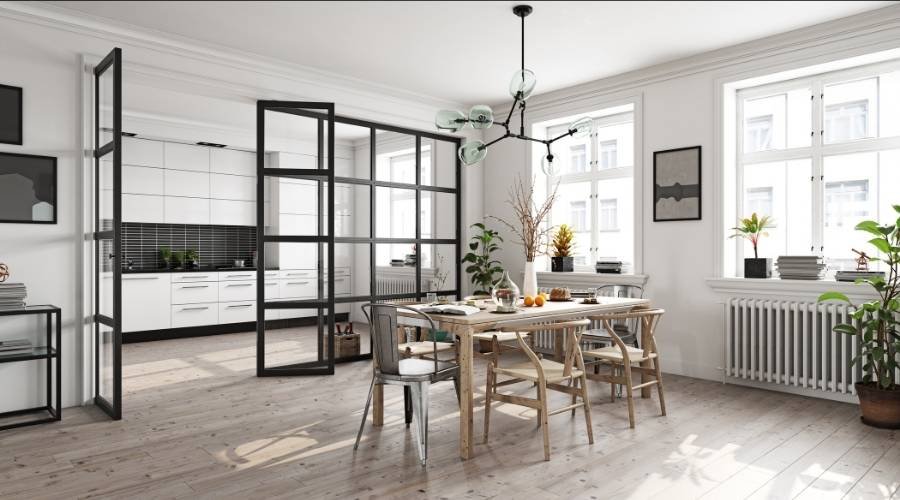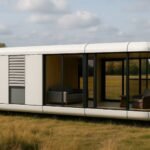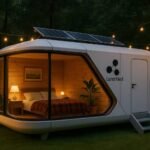Prefab Homes in Australia
Cost Considerations
When chatting about Aussie prefab homes, we’ve found they’re typically a good chunk cheaper than traditional builds—about 10% to 20% less on average. The price tag usually hovers between $100 to $200 a square foot, thanks to a few clever tricks in the process.
Picture this: You can snag a cosy two-bed, one-bath kit home around 85 m² for roughly $114,000. That works out to approximately $1,300 per square metre, pretty close to the country’s average home cost, pinned by the Aussie Bureau of Stats at $1,393.55 per square metre.
Here’s a little cheat sheet on the costs you might bump into with prefab homes:
| Cost Details | Estimated Amounts |
|---|---|
| Basic Building (per sq. ft) | $50 – $100 |
| Two-Bed Kit Home (85 m²) | ~$114,000 |
| Traditional Build (per sq. m) | ~$1,393.55 |
But hang on a sec—while up-front costs might seem lower, remember to budget for sneaky extras like shifting the home to your place, permits, or getting the land ready. So, having a well-thought-out plan and budget helps dodge any nasty surprises.

Accessibility and Affordability
Prefab homes are a golden ticket for keen buyers, from families to solo wanderers or even hustling business folk. Thanks to quicker builds and less need for hands-on labour, modular homes keep costs low, making them an enticing option for those battling with sky-high housing prices.
The beauty of prefab is in its adaptability to suit what we need without emptying the wallet. Small prefab homes are fantastic for anybody wanting to downsize or score a weekend escape spot. For wallet-friendly options, check out affordable prefab homes in Australia for more scoops.
The charm isn’t just in saving cash; it’s about blending quality and flexibility, fitting neatly into a variety of lifestyles. If you’re on a mission for design ideas, diving into best prefab homes in Australia might just sprinkle a bit more inspiration your way.
Factors Affecting Pricing
Alright folks, let’s chat about what really hits the wallet when you’re eyeing a prefab home in Australia. There are biggies like how tricky the design is, how much the land will cost ya, and what you’ll shell out to get it all there. Every one of these factors is like a little voice in your ear when deciding what you’ll spend.
Design Complexity
So, how fancy do you want this new pad to be? The fancier it looks, the more it’ll pinch your pocket. If you’ve got dreams of custom corners and the latest flashy fixtures, expect to fork over a bit more. Think of it like picking between a designer cocktail dress or a comfy old t-shirt. The price tag jumps from $100 to $200 per square foot based on whether you want low-key chic or all-out glam. Check out this simple table for a quick comparison:
| Design Type | Estimated Cost per Square Foot |
|---|---|
| Simple Design | $100 – $150 |
| Moderate Design | $150 – $175 |
| Complex Design | $175 – $200 |
Mixing good looks with good sense can keep your budget on the straight and narrow. Want more ideas? Go peek at our article on best prefab homes Australia.
Land Prices
Now, let’s mosey over to land prices. You’ll notice that real estate costs change faster than a kangaroo can hop, depending on where you’re looking to lay down roots. In the countryside, $5,000 might nab you a slice of paradise, but in busier urban digs, be ready for a price tag over $100,000.
| Location Type | Estimated Land Cost |
|---|---|
| Rural Areas | $5,000 – $20,000 |
| Suburban Areas | $20,000 – $50,000 |
| Urban Areas | $50,000 – $100,000+ |
But hey, it ain’t just about the sticker price. It’s about finding that piece of land that loves a prefab home as much as you do. Need some tips? Dig into our guide on affordable prefab homes Australia.
Transportation Costs
Now onto moving those bits and bobs from factory to forever home. Getting your new place from the shop to the plot ain’t free, with costs usually nestled between $5,000 and $15,000. It’s all about how far you gotta move it and how big it is. Slap these costs onto your budget to keep those surprises away.
| Transportation Distance | Estimated Cost |
|---|---|
| Short Distance (<50km) | $5,000 – $8,000 |
| Medium Distance (50-150km) | $8,000 – $12,000 |
| Long Distance (>150km) | $12,000 – $15,000 |
Knowing these figures ahead of time is your ace in the hole to dodge any unexpected setbacks. Don’t forget about prepping the site—getting it ready can range from a chill $1,500 to an eye-watering $50,000, all depending on land quirks.
Keeping these price points in the back of your mind means we can make smart decisions as we saunter down the path of prefab homes in Australia. Whether itching for something snug like small prefab homes Australia or aiming bigger, knowing what kicks up the cost a notch is the golden ticket to keeping our plans on track.
Case Studies
Top Prefab Builder in Australia: Lunarnest
Lunarnest has carved out its spot as one of Australia’s leading prefab home innovators. Known for their blend of sustainability, affordability, and fast build times, Lunarnest delivers modular homes that tick all the right boxes for modern living.
Whether it’s a compact 2-bedroom home for a young family or a weekend eco-retreat, Lunarnest has a wide range of prefab models tailored to Aussie conditions. Their homes are factory-built using smart, eco-conscious materials, making them both budget-friendly and future-ready.
Why Aussies Choose Lunarnest:
-
Speedy Assembly: Most builds are move-in ready within 6–12 weeks.
-
Affordable Options: Entry-level homes start from $110,000 for a fully equipped 2-bedroom setup.
-
Green Thinking: Solar-ready designs, low-waste construction, and sustainable materials.
-
Customisation: Flexible layouts that suit everyone from downsizers to growing families.
| Lunarnest Home Type | Approx. Size | Starting Price (AUD) | Build Time |
|---|---|---|---|
| Compact Retreat | 60 m² | $95,000 | 6–8 weeks |
| Two-Bed Starter | 85 m² | $110,000 | 8–10 weeks |
| Family Modular | 120 m² | $160,000 | 10–12 weeks |
Lunarnest’s success lies in its ability to bring high-quality homes to market faster and at a lower cost than traditional builders. With options suited for urban, suburban, and off-grid living, they’ve earned a solid reputation among first-home buyers, regional dwellers, and sustainability-minded Aussies alike.
From city blocks to bushland escapes, Lunarnest is redefining what affordable homeownership looks like in Australia.
Success Stories in Australia
In the land Down Under, prefab homes are catching the eye for being wallet-friendly and super-efficient. Picture this: there’s a company that’s been shaking things up by rolling out affordable prefab homes for first-timers and families. These snazzy pads go up real quick, getting families settled fast while keeping the quality top-notch.
Check out the numbers below to see how these homes stack up against the old-school builds.
| Home Type | Average Cost (AUD) | Assembly Time (Months) |
|---|---|---|
| Traditional Homes | $400,000 – $600,000 | 12 – 18 |
| Prefab Homes | $250,000 – $400,000 | 3 – 6 |
The buzz around affordable prefab homes in Australia is all about delivering top-quality homes that don’t break the bank. They even come with modular designs so families can add their personal flair and make these houses feel truly theirs.

Lessons from Japan and Sweden
Peeking over the fence to see what Japan and Sweden are up to can teach us a thing or two. Both countries have woven prefab into their urban scenes, showing just how good this type of housing can be down here in Oz.
Over in Japan, they’ve nailed speeding up builds and cutting down waste with prefab construction. They hit the sweet spot between being eco-friendly and efficient, catering to the demand of modern homebuyers. Their focus is on energy-saving homes, which match perfectly with today’s green-minded crowd.
Meanwhile, in Sweden, they tackle housing shortages by blending clever designs with community-friendly vibes. They stick to green building practices that keep costs attainable and embrace sustainability.
According to the PrefabAUS Prefabrication Industry Roadmap for 2023-2033, ramping up smart building tactics in Australia might bag us a cool $AU9 billion yearly. This shows there’s a heap of room for growth in this field. Our journey into small prefab homes in Australia opens up a world of affordable, green living, ticking the boxes for both demand and community goodness.
What Japan and Sweden have done screams that thinking outside the box pays off in the prefab game. We can definitely pull off a similar win here by taking a leaf out of their book. If you’re curious to dive deeper, our guide on the best prefab homes in Australia spills the beans on the hottest designs and builders making waves in this booming market.
Financial Planning
So, we’re diving into the world of prefab homes in Australia — let’s talk money. It’s all about getting savvy with the moolah, like sniffing out grants, incentives, and how you’ll pay for the whole shebang.
Grants and Incentives
Now, who doesn’t love a good grant or incentive? We can snag some great deals to make our prefab home dream a reality. Like, the NSW Government dropping a cool $10 million on modular social housing — kinda shows they’re backing innovation here. Betcha there are similar support systems waiting for us.
Hold onto your hats though. While looking abroad at countries like Canada, they’re pulling off eco-friendly schemes like heat pump grants. Could Australia follow suit? Maybe, so keep your eyes peeled for incentives that fit our sustainable home goals.
On the money front, moving our prefabs can seem like a wallet-draining affair. But before you scrimp on hiring professionals, consider the DIY costs — gadgets, permits, and insurance could cost an arm and a leg. Planning ahead and choosing quiet times might save us a tidy bundle on transport.
Financing Options
Let’s get into the nitty-gritty of paying for our prefab haven. There are quite a few ways to swing the cash, and some lenders are all about those prefab options. You’ll find mortgages and loans that are anything but cookie-cutter, catering to what we need.
Here’s a little snapshot of what’s out there:
| Cash Route | What’s the Deal? | The Ups | The Downs |
|---|---|---|---|
| Traditional Mortgage | Your average home loan. | Cheaper interest | Big bucks needed for a deposit |
| Specialised Loans | Loans with prefab in mind. | Prefab-friendly terms | Not every bank’s got ’em |
| Personal Loans | Borrow without collateral. | Quick cash hit | Pricey interest rates |
| Government Grants | Help when building social or affordable homes. | Free money! | They’re picky about who qualifies |
As we figure out this prefab journey, it’s all about checking out those grants and loans to make smart choices. Curious for more on home styles? Wander over to our pages on affordable prefab homes in Australia and best prefab homes in Australia for the lowdown.
Building Process
Building prefab homes, also known as prefabricated houses, is like piecing together a puzzle efficiently without losing any pieces of quality. The whole shebang’s pretty slick, if you ask us. Getting the hang of this speedy method means we can make some smart eco-friendly choices.
Assembly Timeline
Getting a prefab home up and running is quicker than you might think. With pieces made in a factory while the site’s getting prepped, we can hit the ground running. This two-for-one deal means homes are finished faster, which is great news for investors keen to see returns sooner rather than later.
| Phase | How Long? |
|---|---|
| Dreaming & Scheming | 2-4 weeks |
| Building the Bits | 6-12 weeks |
| Getting the Ground Ready | 4-6 weeks |
| Putting it All Together | 2-4 weeks |
| Wrapping It Up | 14-26 weeks |
This timetable tells us just how nippy the whole thing is. By going with prefab, we dodge the drama of bad weather slowing us down. Cooked right, we’re talking a neat’n’sweet experience compared to how people used to do it.
Efficiency and Sustainability
Prefab builds are pretty awesome for the planet and your pocket. Factories are as waste-conscious as a squirrel hoarding nuts, making sure not a drop is wasted. That’s good news all round – keeps costs down and offers Aussies affordable prefab homes!
The folks behind PrefabAUS reckon Australia could rake in $AU9 billion more a year by getting into the groove of prefab practices. Talk about money savvy and planet-steady moves!
Granny flats in Melbourne are riding this prefab wave, too. Want fast fixes and adaptable digs in busy towns? Prefab’s your go-to, especially since it accommodates those pesky planning regulations with ease.
Jumping onto the prefab bandwagon doesn’t just mean we get sweet homes at comfy prices; we also do our bit for Mother Earth. Curious about what’s cooler? Check our best prefab homes in Australia or, if cozy’s your tickle, check small prefab homes in Australia. There’s something just right for everyone, mate!
Industry Trends
The prefab housing scene in Australia is shaking up. And guess what? This shake-up’s great news for us, whether we’re looking for wallet-friendly homes or exploring fresh housing options.
Prefab Market Growth
Brace yourselves because the prefab housing market in Australia is on the rise. According to the latest from PrefabAUS’s 2023-2033 roadmap, Australia could pocket a cool $AU9 billion yearly, all due to smarts in building and fab housing practices. More folks are warming up to prefab homes as a down-to-earth solution for our living needs.
A big reason for this surge? Prefab homes make building a breeze. We’re talking about factory-made panels or modules that let builders get cracking on construction while site prep and foundations are still underway. This means faster finishing, less weather hassle, and quicker cash flow for those bankrolling the projects.
| Year | Projected Annual Benefit in Australia |
|---|---|
| 2023 | $AU1 billion |
| 2028 | $AU5 billion |
| 2033 | $AU9 billion |
Research and Development Focus
Innovation is the name of the game in prefab land. By investing in cool new materials and techniques, we’re seeing prefab homes that don’t just meet but beat standards in quality and cost. This trend is making waves, especially in big city projects, like high-rise buildings and crowded apartment complexes.
Take Melbourne, for example. There are plans in the works for 230,000 granny flats, thanks to the prefab boom. Not only do these flats tackle the housing crunch, but they’re also a wild card in dealing with town planning headaches.
A heads-up on the cash front: HiPages tells us that basic prefab homes like kit homes typically set us back $2500 to $3000 per square meter. For anyone eyeing places with a bit more flair and extras, pricetags go up.
Want to hear more about cutting costs? Check out our take on affordable prefab homes in Australia and small prefab homes in Australia. There’s something for everyone, and with industry trends rolling, the number of options for prefab homes in Australia is only going to grow, giving us endless possibilities for our next move.






